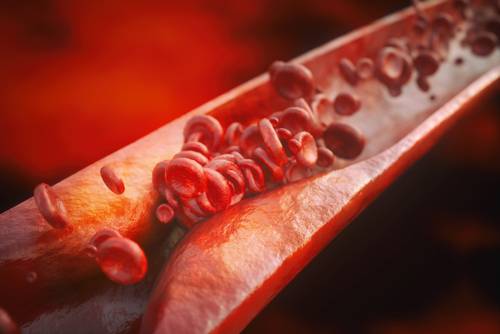Levels of the inflammatory signaling molecule interleukin 6 (IL-6) in the blood may be a useful prognostic tool for systemic juvenile idiopathic arthritis (SJIA), a study suggests.
The study, “Correlations between serum interleukin 6, serum soluble interleukin 6 receptor, and disease activity in systemic juvenile idiopathic arthritis patients treated with or without tocilizumab,” was published in the Central European Journal of Immunology.
IL-6 is a signaling molecule that is important in driving a number of inflammatory processes. It is known to be involved in JIA and has been shown to be present at higher levels in SJIA than other subtypes of the disease.
In fact, the JIA treatment tocilizumab — sold under the brand name Actemra in the United States (marketed by Genentech) and sold as RoActemra in Europe (marketed by Roche) — works by blocking IL-6 from binding to its receptor, appropriately called the IL-6 receptor (IL-6R).
However, it is unclear how levels of IL-6 and IL-6R in the blood change in people with SJIA who have active or inactive disease. To examine this, the researchers took a total of 164 blood samples from 42 people with SJIA and measured the levels of these molecules.
Based on the participants’ health status at the time of sampling, samples were classified as being in one of three groups: 29 were “systemic,” meaning the participant was actively experiencing arthritis and systemic symptoms (e.g., fever, rash) at the time of sampling; 108 were “arthritis,” meaning the participant was experiencing active arthritis, but not systemic symptoms; and 27 were “inactive,” with participants experiencing neither arthritis nor systemic symptoms at the time of sampling.
The researchers found that IL-6 levels were highest in the systemic samples (median 82.2 pg/mL), followed by the arthritis group (19.9 pg/mL), and the inactive group (6.7 pg/mL). Differences among all of these groups were statistically significant, and all were significantly higher than levels seen in samples from individuals without JIA (15 individuals sampled; median IL-6 measurement 2.8 pg/mL).
IL-6 levels also correlated significantly with disease activity, as assessed by the Juvenile Arthritis Disease Activity Score-27 (JADAS-27).
Average IL-6R levels were also higher among people with SJIA than those without. Interestingly, among SJIA patients, these levels were higher in the arthritis and inactive groups than in the systemic group, and these levels did not correlate especially strongly with markers of disease severity.
Further analysis revealed that the ratio of IL-6R levels to IL-6 levels correlated significantly with disease grouping, with the lowest average ratios in the systemic group and the highest average ratios in the inactive group. This association was independent of tocilizumab treatment.
“The results showed that both factors were higher in patients with active disease, including systemic features or/and arthritis, than in healthy controls,” the researchers concluded, adding that, “a promising marker, the [soluble] IL-6R/IL-6 ratio, might be useful for monitoring disease activity in both SJIA patients treated with and without [tocilizumab].”

